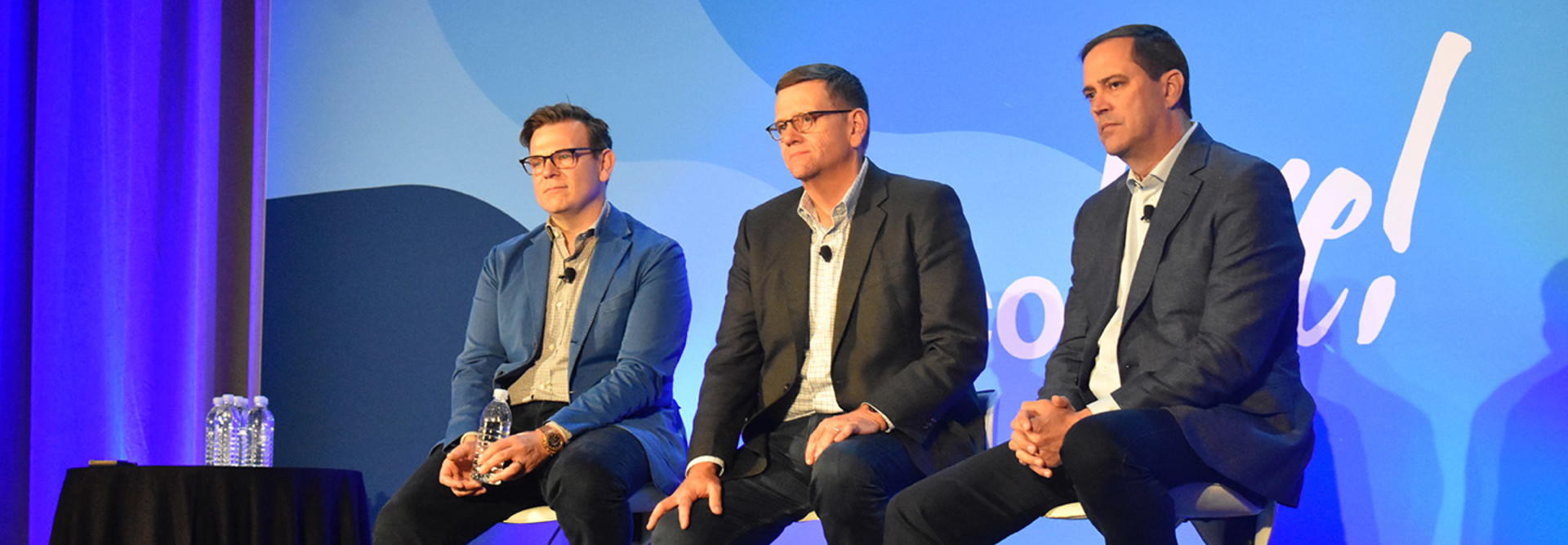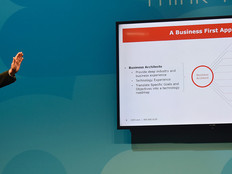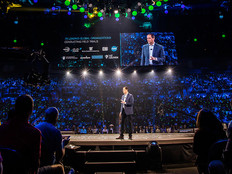Cisco Live 2017: Small Businesses Can Get Access to More Intelligent Networks Too
Although large enterprises are often seen as the target for new IT innovations, Cisco Systems executives think that small and medium-sized businesses are eager to adopt the new network technologies the vendor is touting this week at the Cisco Live 2017 conference in Las Vegas.
Cisco used the opening keynote on Monday to provide broader information on its new networking strategy, which it unveiled last week. The company is focusing on the idea of intent-based networking, in which network managers’ business intentions can be automated throughout the network, simplifying management. Additionally, intent-based networks are built around context, which managers can use to derive insights and also increase security.
SIGN UP: Get more news from the BizTech newsletter in your inbox every two weeks!
Cisco Sees Small Businesses Interest in New Network Tech
During a press conference after the keynote, Cisco executives said that they think these solutions are geared toward both enterprises and SMBs. All of Cisco’s customers can benefit from networks that are more intuitive and secure, Cisco CEO Chuck Robbins said.
“Over the last decade, as we have launched new innovative technology, almost without exception, the midsize enterprise has been the early adopter of that technology,” Robbins said, noting that that was the case with both voice and the Cisco Unified Computing System data center server line.
“And we look at some of the early orders we are getting from the solutions we announced last week,” Robbins added. “Once again, you see midsize, even some very small customers who are already placing orders with us to get ahead of this.”
David Goeckeler, senior vice president and general manager of Cisco's Networking and Security Business, noted that the new Cisco solutions “are accessible for anybody who is building a network, basically. Our whole goal here is to drive automation and simplicity in the network.”
Cisco has taken many cues from its Meraki unit, which Goeckeler said has created a wireless platform and architecture that is easier to manage and operate. “I think this architectural paradigm goes across anybody that is going to build an IP network,” he said.
Customers, Robbins said, want simplicity, security and automation in their networks, “and if we can give them more insights and context out of the network, then that’s all goodness. So, I think customers are trying to digest how they make this transition from the way they do things today to this new world.”
On that note, Goeckeler did acknowledge that Cisco’s software-driven approach to networking is “a change in how you build IP networks.”
So far, Cisco is testing the new intent-based network tech with 75 leading global enterprises and organizations, including DB Systel, Jade University of Applied Sciences, NASA, Royal Caribbean Cruises, Scentsy, UZ Leuven and Wipro.
Goeckeler said that the field trials include customers “of all different sizes in all different verticals, from the biggest customers in the world to small customers in all different kinds of businesses.”
Cisco does think customers will adopt the new approach, but Goeckeler said training is needed, and there is a learning curve. Cisco has brought in sales teams from around the world to Cisco Live and trained 10,000 of its sales members to discuss the new networking approach with customers.
New Switches Are a Key Element of Networking Strategy
During the press conference, Scott Harrell, senior vice president for production management in Cisco’s Enterprise Networking Group, described the three parts that make up the new networking solution.
The first is the line of Cisco Catalyst 9000 switches. Cisco is already taking orders for the programmable switches, which come in three models: 9300, with fixed access; 9400, with modular access; and 9500, with fixed core.
Harrell also discussed DNA Center, a centralized management dashboard that gives IT teams an intent-based approach to network spanning design, provisioning, policy and assurance. The dashboard gives IT full visibility and context across the entire network, allowing network administrators to centralize management of all network functions.
“By watching the network in real time, we can make changes in the network and adapt it,” Harrell said. For example, a user might try to access a Wi-Fi network four times, but another person might stop after the first attempt and call the help desk.
“If we can get insight into problems as they are happening, organizations can fix them before they become help desk problems,” he said.
The final piece of the new networking solution is Encrypted Traffic Analytics, an application built on the new switching platform. “The biggest problem we face as an industry is cybersecurity,” said Harrell. He noted that malware is often hidden in encrypted traffic and can spread across a network. Using Cisco’s Talos cyberintelligence and machine learning, companies can identify malware with 99 percent accuracy without having to decrypt the encrypted traffic, which allows for better data privacy. “No one in the world can do this,” Harrell said,
Intent-Based Networking in Practice
To give an example of how all this works, Harrell offered the example of a large healthcare provider adding a new campus.
Doctors need electronic medical records, so the provider needs to offer secure access to devices connected to the network. The new campus could add all provisioning once through Software-Defined Access, which uses automated policy enforcement and network segmentation over a single network fabric.
This is one-time provisioning implemented across access, campus and wide area networks, dramatically simplifying the network management process. Once provisioned, network managers could segment different access rights for different groups of people (such as patients, doctors and staff).
The network takes data about users, apps, devices and threats, and turns it into context. Sachin Gupta, vice president of product management for Cisco switching, said, “The last thing you want is malware to get into the network and onto a medical device a patient needs.”
How Intent-Based Networking Delivers Real-World Results
While the 9000-series switches are available for ordering now, the entire networking solution will be available in about three to four months.
Royal Caribbean, one of the new solution’s early adopters, operates about 50 ships around the globe at any one time. They are floating cities detached from the world, said Royal Caribbean CIO Mike Giresi.
“We have to be worried about security,” he said. “This solution gives us analytics in real time about threats to the network and our apps that we continue to roll out for our guests.”
Harmony, one of the cruise lines’ ships, was at sea in the Caribbean during New Year’s Eve. CNN wanted to broadcast from the Caribbean with a live stream. The network performed well, and the broadcast was a huge success, according to Giresi. “This may not seem like a great achievement, but it is when you’re in the middle of the sea with a full crew and passengers,” he said.
Read articles and check out videos from BizTech coverage of Cisco Live 2017 here.










